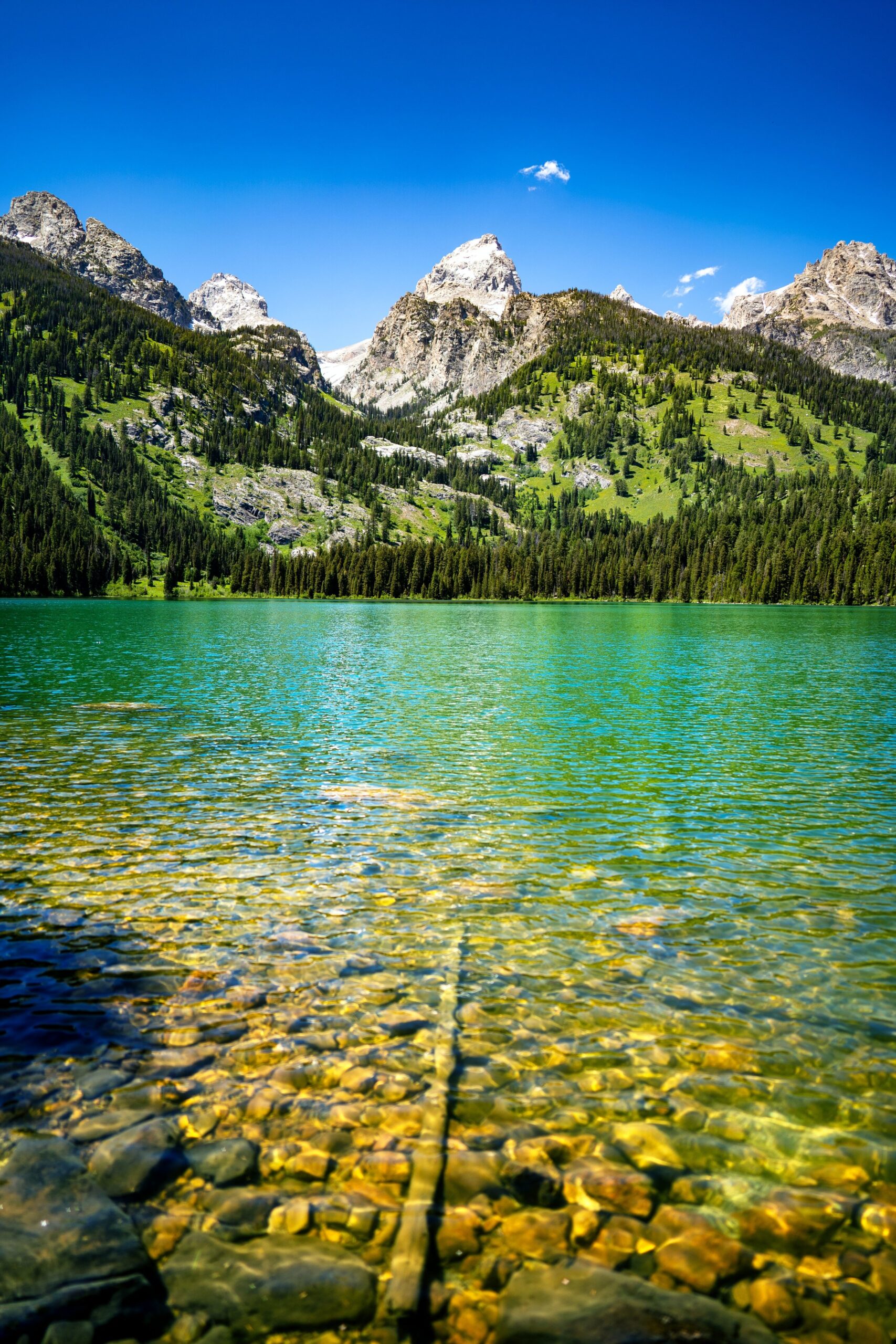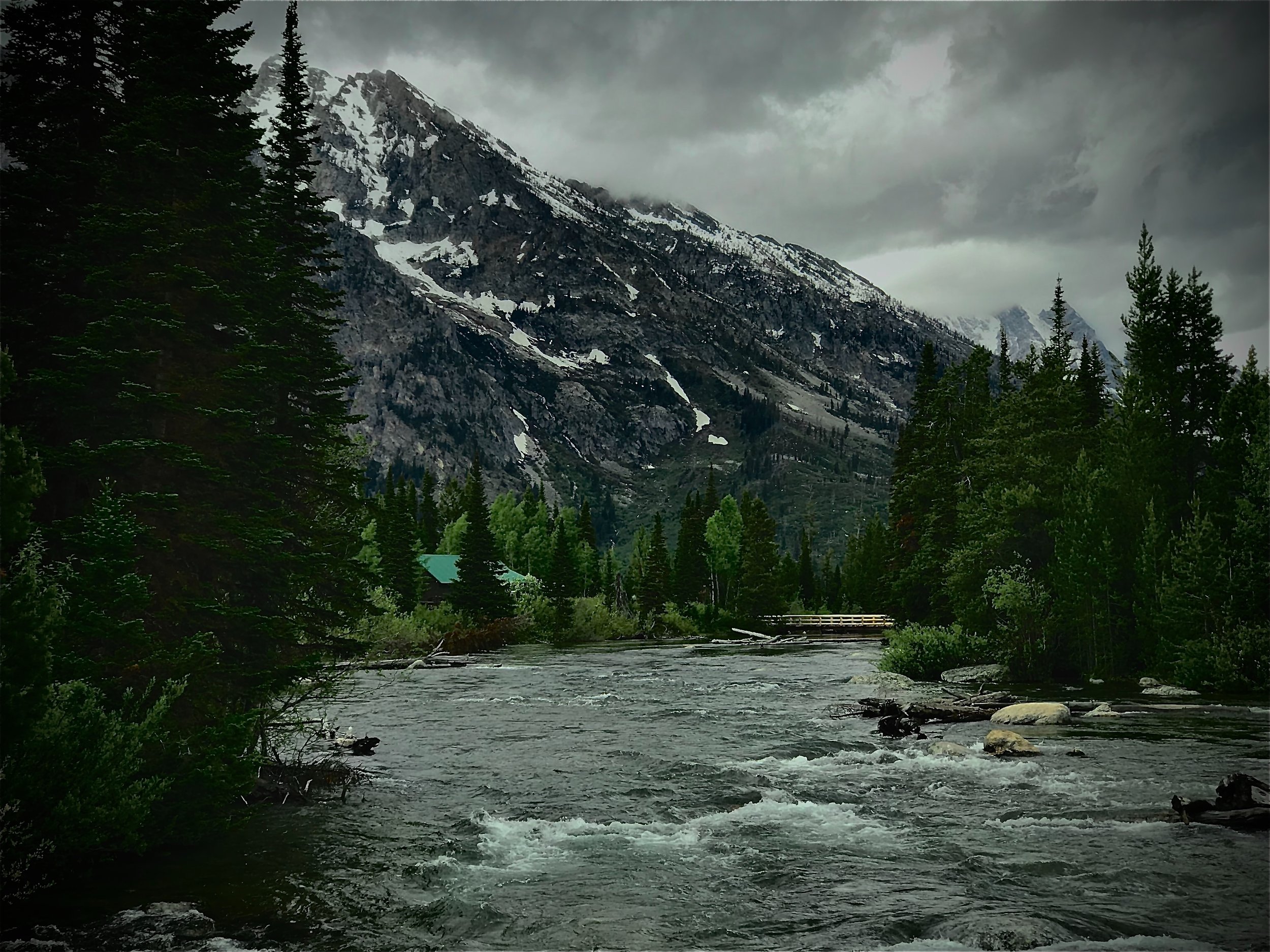GRAND TETON FISHING
 1
1
 1
1
Water made the Grand Tetons what they are today, both carving them out and providing nourishment for the vast quantities of plants and animals that call the area home. Erosion and uplift are the driving forces behind these massive features in the texture of our planet’s crust. The glacial runoff sends billions of gallons of water over the land and provides seemingly endless Grand Teton fishing opportunities.
Water made the Grand Tetons what they are today, both carving them out and providing nourishment for the vast quantities of plants and animals that call the area home. Erosion and uplift are the driving forces behind these massive features in the texture of our planet’s crust. The glacial runoff sends billions of gallons of water over the land and provides seemingly endless Grand Teton fishing opportunities.
Grand Teton fishing is an experience that should be on the bucket list of every angler, as the area is a paradise of swirling pools, gurgling streams and tranquil lakes.
The best season to go on a Grand Teton Fishing trip is from mid-June to November when things begin to freeze over. Whether you’re after a swift ripple or a gentle current like those found in the smaller lakes, there is something to suit nearly everyone’s preferences.
There are over 100 lakes in Grand Teton National Park and in addition to the two most well-known, bigger lakes – Jenny and Jacksons Lake – there are countless smaller lakes that provide fantastic fishing opportunities and can be less crowded during peak season than the larger lakes. Some of the best lakes for Grand Teton fishing are String Lake and Leigh Lake. The Snake River and the Greys River merge in the Palisades Reservoir which is situated on the Idaho-Wyoming border and is one of the only places to fish for salmon in the region.
Jenny Lake is an extremely popular lake for fishing for a few reasons.
It is easily accessible with numerous banks to fish from, a boat launch on the south side of the lake and hiking trails around the lake.
The scenery around the lake is absolutely breathtaking.
A variety of trout call the lake home, and you can expect to find cutthroat trout, lake char, rainbow trout, white sucker, brown trout, and mackinaws here. Generally, the best time to fish in Jenny Lake is mid-May, shortly after the snow melts.
Jackson Lake is the biggest body of water in the Bridger Teton National Forest and, not surprisingly, is where you can find the area’s biggest fish. The state record is a 50-pound mackinaw (lake trout) that was caught here. In the spring, shortly after the ice begins melting, fishing from the shore is recommended, as the fish are looking for baitfish. As the water warms up with the approach of summer, the fish move to deeper parts of the lake, so you’ll need a boat to find them. The water temperatures will start to drop in mid-September and the lake trout will begin spawning. The lake will be closed during the month of October to protect the Mackinaws during this spawning period.
No Grand Teton fishing experience is complete without a day (or days) spent on the Snake River. It is one of the most famous rivers in the world for trout fishing and is home to the legendary Snake River Fine Spotted Cutthroat Trout.
Up in the mountains of Yellowstone, three smaller streams converge to form the Snake River. Fishing here is allowed all year long, though understandably, it’s more popular during the warmer months from spring to fall. With over 70 miles of scenic river to fish on, it is a place without equal for freshwater fishing enthusiasts.
Some of the largest tributaries of the Snake River are the Greys River, Little Greys, the Salt River and Hobock River. The numerous larger and smaller tributaries of the Snake River are prime spots for casting a line in the hopes of hooking a trout.
Near the Glamping On the Greys campsite, the Little Greys River provides the stunning views that the Grand Tetons are famous for, along with an abundance of trout that are usually eager to bite. Beaver Creek and Ditch Creek are great places to find smaller cutthroat trout and brown trout.

Some of the most iconic images of fly fishing are scenes of fishing along the sprawling banks of Wyoming’s rivers. Grand Teton fishing is almost always a rewarding experience, and fishing with dry flies brings you even closer to the nature that envelops you here. To keep it that way for future generations of anglers, one must adhere to the rules that have been established to protect the environment and fishing populations that live there. The majority of people who come to fish in the Grand Tetons catch and release, but if you plan on harvesting your catch, you should know the limits for the different areas and species.
A limit of 6 for:
A limit of 3 for:
limit of 2 for:
Other limits:
Wyoming fishing permits can be obtained from the Wyoming Game & Fish Department or from a local shop in the Jackson area. The pricing structure varies, depending on factors like the applicant’s age, state of residence, and number of days the license is needed. If you plan to fish within the borders of either the Grand Tetons or Yellowstone National Park, you will need to obtain a conservation stamp in addition to the fishing license.
Here is the basic pricing structure for a Wyoming fishing license:
If Grand Teton fishing is on your bucket list, look no further than Glamping On The Greys. Our all-inclusive glampsite nestled right in the Star Valley provides easy access to the best fishing places in Grand Teton National Park, Jackson Hole, Yellowstone and the surrounding areas. Our experienced guides know the land like the back of their hands and can take you to the premier and exclusive spots to hook your Wyoming trout. Contact us today to reserve the campsite and experience the world-class trout fishing of Wyoming.
